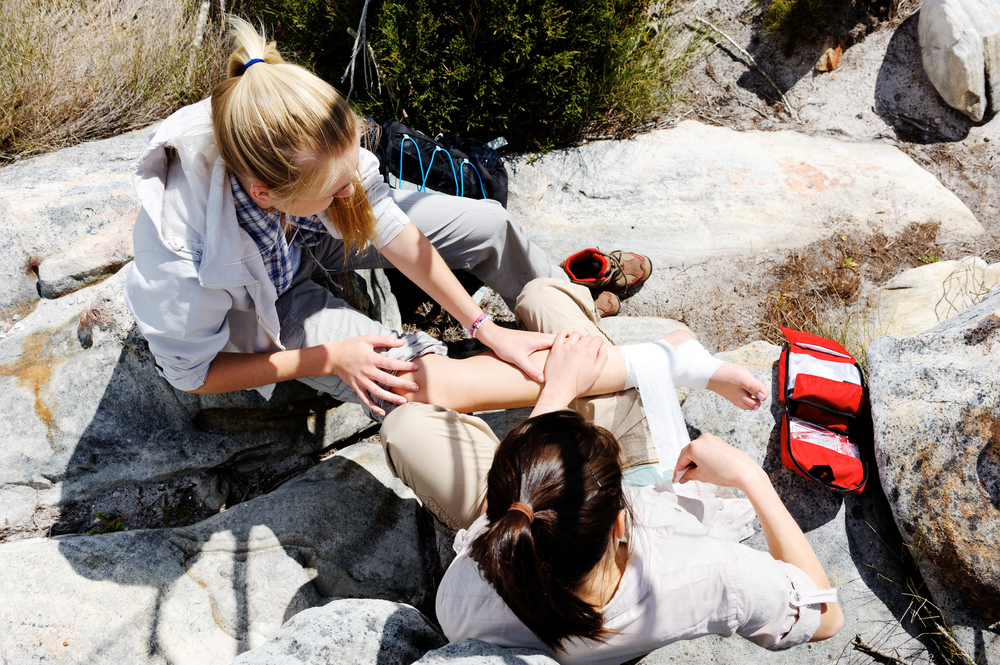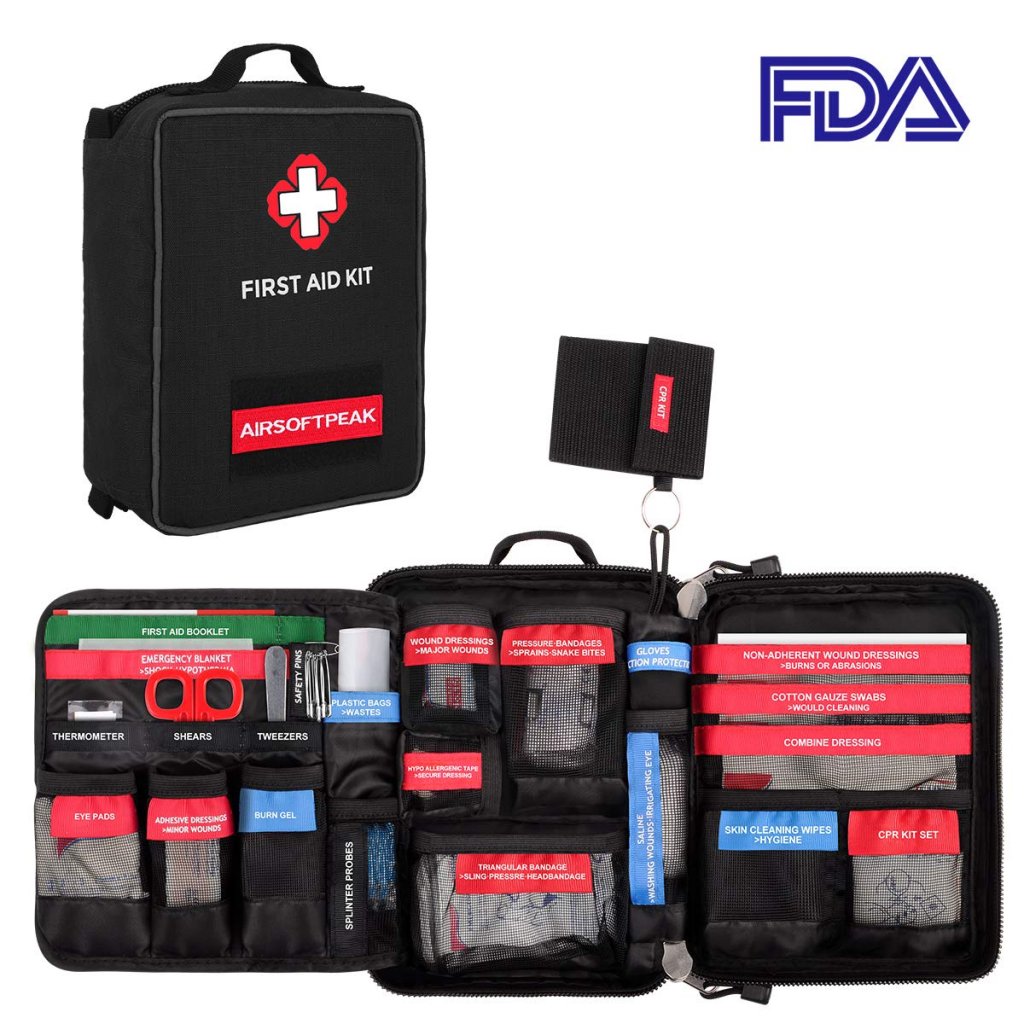So you’re planning to hit the dirt this weekend and now, you’re in a dilemma. Just what stuffs should you bring to aid in your medical emergencies while out and about? Hiking is, without a doubt, a fun adventure.. But going on a hike can also bring bruises, skinned knees, bug bites, or worse, life-threatening injuries from accidents along the way. Hence, this makes you reading on this hiking first aid kit guide a welcoming perspective.

Source: womensrunning.com
First Aid Kit For Hiking
Universally known as one of the essentials when on a hike, a first aid kit is often taken for granted by many hikers only to be remembered when an accident happen on the trail. When choosing the type of first aid kit though, adequate planning must be done. You just can’t bring a huge medicine cabinet with you while on a hike– and this makes choosing quite tedious.
A hiking first aid kit must be first and foremost complete with stuff that you regularly use like bandages or aspirin and those that are used in a critical emergency. You need to carefully plot out the length and duration of the hike, possible risks and hazards along the way, underlying medical condition (if any), and other personal preferences. The key idea is to have something that will aid in survival or, at the very least, to prevent a life-threatening infection.
Supply List
When planning your hiking first aid kit for the first time, it is best to write down what you will need. You will most likely require the following for a three-day hike:
- Wound or Injury Protection. You will need sterile dressing pads for applying pressure to stop bleeding. Bandages for cuts and blisters, sterile dressing, closure strips for large wounds, gauze roll, adhesive tape, antiseptic wipes, elastic wraps, splint, hemostatic gauze, triangular cravat bandage, and so on. Other first aid basics include antiseptic towelettes, cleansing pad, latex nitrile gloves, antibiotic cream (topical), vaseline, duct tape or moleskin, povidone iodine, aloe vera gel and so on.
- First Aid Tools. You will need tools to move around when outdoors. A multi-use tool can help not just in tending wounds but also in preventing accidents from happening. Forceps or tweezers and safety pins, on the other hand, can remove splinters and debris. A multi-tool must have trauma scissors to help cut medical tapes without adding more to hazards. It must also have a digital thermometer, foam-covered aluminum malleable splints, irrigation syringe for flushing and cleaning wounds, while a suction syringe when giving CPR is necessary. Other tools needed are– magnifying glass, razor blade, a mirror, heat-reflecting blanket (in the winter), CPR mask, and so on. A resealable plastic bag may also be used for icing swollen joints.
- Medications. Hiking can sometimes bring one’s immune system on haywire resulting to fever, body pains and inflammation. Sometimes it can result to life-threatening allergies and injuries. With this, you will need pain relievers, antihistamines, anti-diarrhea or intestinal infections, antacids, and so on. A hydrocortisone cream may also come handy in fighting bites, stings, poison or allergies. Oral rehydration salts must also be included to prevent dehydration.
- Personal Care. To complete the supply list, a hiker must also bring about these items on their diminutive outdoor backpack– sunscreen, insect repellant, lip balm, sanitizer, biodegradable soap, and water-treatment.
AIRSOFTPEAK First Aid Kit
So hopefully, this hiking first aid kit guide have shown that you have two choices left, that is, when prepping first aid kit for an upcoming long hike. You can pile up on the supplies mentioned above or simply buy pre-packaged kits like the 96 Piece hiking , camping m All-Purpose First Aid Essentials Kit. As always, it is essential to list down what you need before embarking into a long hike to ensure safety at all times.


